Introduction
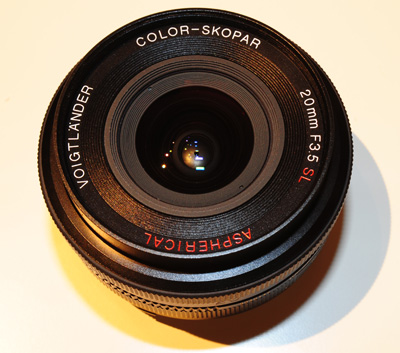
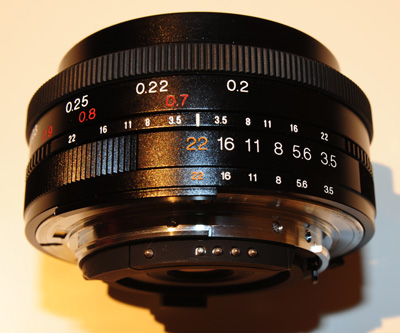
I present you my first review, of the Voigtländer Color-Skopar 20mm f/3.5 SL II Aspherical lens for the Nikon mount. The test was made on a D700 full-frame DSLR. The lens has a very compact design, which is commonly referred as “pancake”, and if you’re like me you’ll appreciate the size and weight of this lens, making a relatively lightweight kit with the D700 for walking around the streets. Watch the funny combo below:


Its retail price of €449 seems fair for a pancake lens. Having a maximum aperture of only f/3.5 it’s not the fastest prime lens out there, but this aperture limitation is common for such design. In fact, there are not many pancake lenses as cheap as this one, and particularly on Nikon land these pancake lenses are a rarity. The lens includes an aspherical element to reduce aberrations and distortions. As a manual focus lens, it can be a bit limiting for you depending on your shooting style, but that’s also true for every manual focus lens such as Nikkor AI or Zeiss ZF lenses. The fact that the lens has a wide focal length eases this limitation a bit, being very easy to focus anywhere you want.
I didn’t write a review of this lens when I had my previous D300, but from the tests I did and all the real world shootings I made, I found this lens to be a very good performer on DX stopped down. I even went on a trip to Holland only with this lens and didn’t need anything else on the streets. On DX, the focal length is just perfect and it was very handy for taking pictures of churches and other tall buildings, street scenes and urban landscapes. This time I’m showing you the results of a much more demanding test (on FX), so let’s find out if the Voigtländer is worth your consideration if you’re searching for a wide angle lens.
Technical Specifications
| Focal length | 20 mm |
| Biggest aperture | f/3.5 |
| Smallest aperture | f/22 |
| Field of vision | 94 degrees (on FX) |
| Weight | 205 g |
| Dimensions | 29 x 63 mm |
| Optical construction | 9 elements in 6 groups, 1 aspherical element |
| Aperture blades | 9 |
| Filter diameter | 52 mm |
| Minimal focus distance | 20 cm |
| Hood | LH-20N (optional) |
| Mount | AI-S, CPU integrated |
Mechanical Characteristics
| Zoom ring | n/a |
| Focus ring | All-metal with rubber finish, no infinity stop |
| Focus throw | 170 degrees |
| Focus motor | n/a |
| Optical stabilizer | n/a |
| Front element rotation while zooming | n/a |
| Front element rotation while focusing | No |
| Lens extension while zooming | n/a |
| Lens extension while focusing | Yes, 3 mm |
| Internal focusing | No |
Handling
The Voigtländer is a very compact lens as you can see above in the pictures, and being all-metal it’s very well built and surprisingly heavy for such size. Being a manual focus lens, probably the most important aspect is how the focus ring feels on your fingers, and it does indeed feel great. The focus ring is perfectly damped and focusing is very smooth. I had been shooting with some manual focus lenses (AI-S and Samyang) but focusing with this lens feels even better than those. It feels smooth and has a long throw of about 170 degrees for precise focusing. This is mostly useful in near distance, of course, because from about 10 meters to infinity there’s almost no need to move the focus ring again. Beware, though, that the lens is capable to focus past infinity which isn’t good news for astrophotographers. Fortunately most cameras today have Live View, which is of precious help if you want precise infinity focus. The focus ring has a rubber finish for a perfect grip.
The less positive things about this lens is that it doesn’t have a lock on the aperture ring, therefore watch out and keep the aperture ring on f/22, otherwise you’ll get a fEE error on your LCD display. Because the lens is so tiny and there’s almost no space between the focus and aperture rings, attaching and dettaching the lens from the camera can be a bit difficult, but with a firm grip on both focus and aperture ring, along with the fixed 3mm spacer in between, it can be done but be warned that the lens gets almost glued to the camera.
Anyway, my only thumbs down goes to the front cap which gets off so easily with just a small touch. There were many times that I had my camera and lens on my shoulder pack and the cap was off. Just throw it out and get a Nikon one.
Resolution
For the resolution test I shot a near distance object and a far away building to find out if there were any visible differences in image quality. I focused using Live View and focused again using this method when moving the target to the corners. Turns out that the lens performs very similarly and all distances, regarding resolution and vignetting, therefore I’m not showing the far distance results this time.
The first column shows a crop of the image center, the corner crop is on the second column and the third column shows a crop of the extreme corner. Each row represents an aperture setting, from maximum to minimum in full stops. For the near distance test I used a 5 Euro bill as target. Here are the results:
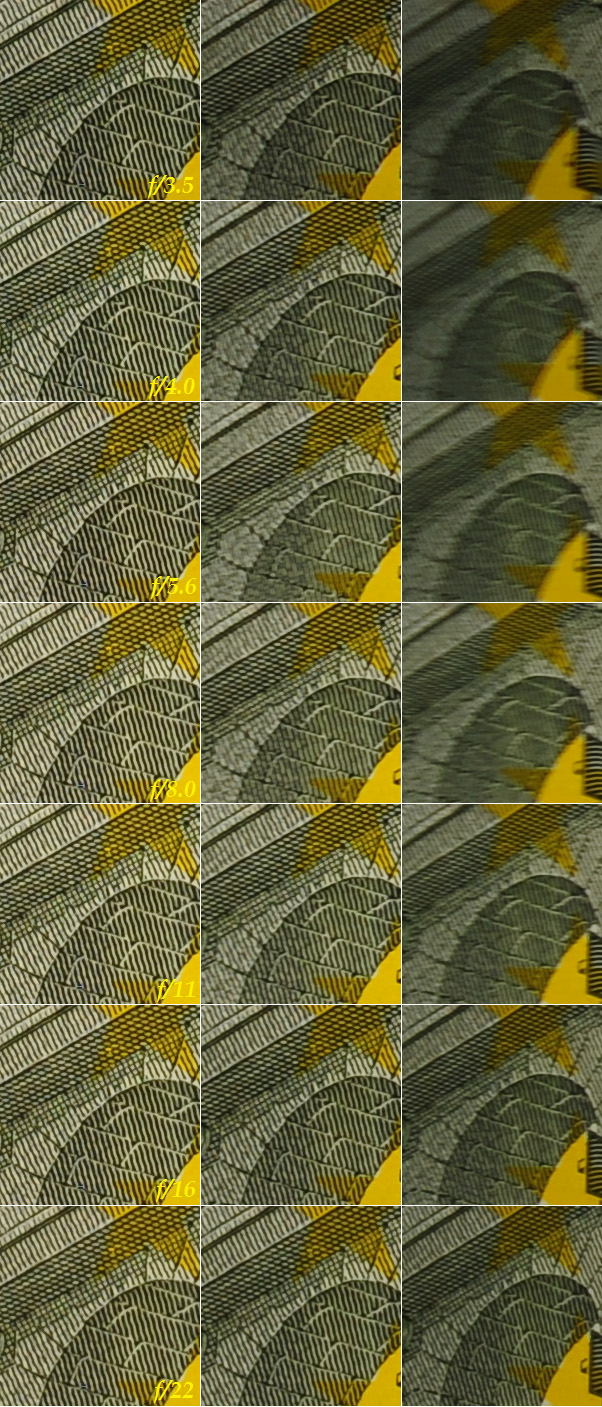
You can see that the center resolution is already very high and the images have very good color and contrast. This is always true until f/16, from which diffraction starts making effect. The corner resolution is very weak at f/3.5 and gets acceptable only by f/8, where I mainly use the lens on landscape photography (or f/11 for that matter if there’s enough light). The extreme corners are dismal – this is the effect of putting a pancake lens on a full-frame camera – resolution practically doesn’t exist wide open, and coupled with heavy vignetting this makes an awful combination for available light photography. The extreme corners get much better only by f/16.
If you want corner-to-corner sharpness this lens has to be stopped down to f/16 at least, or f/11 if you can tolerate some mushy corners. Depending on your subject even f/8 can be used, as long as the corners don’t have fine details.
In conclusion, this is a lens to be used on sunny days or with the help of your tripod. This is a huge disappointment to me because the lens is great on DX!
Distortion
For the distortion test I shot a brick wall, of course:

The lens distortion is well controlled. Vertical lines are always straight and there’s no signs of barrel distortion, which is great for taking pictures of buildings. The problem resides on horizontal lines, and this mustache distortion can be very noticeable if the target has many horizontal lines. This type of distortion is very difficult to correct in post-processing, so it is best to avoid placing horizontal lines on the top or the bottom of the frame, where distortion is mostly visible.
As an example, here’s a “real world” photo of an interior. You can see that vertical lines remain straight as long as you hold the camera parallel to the ground. Because there weren’t any horizontal lines due to the framing angle I used, this shot seems perfectly balanced:
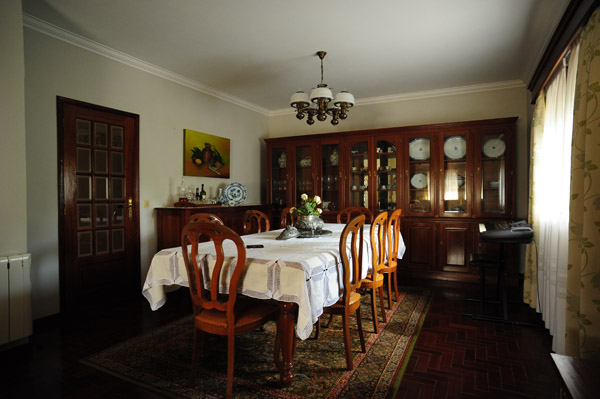
Vignetting
In this test I shot a white wall at home using manual white balance.

As detected previously on the resolution test, vignetting is very heavy wide open and things start to get even only by f/8. Notice that this is mostly visible on shots of white walls like this. As a matter of fact I can make a nice use of the vignetting wide open on shots of flowers and other small stuff like that. Fortunately most or all vignetting can be removed in post-processing.
Chromatic aberrations
It was a clear bright sunny day with the sunlight reflecting on my brother’s car and I searched for a spot where to make the shots. I shot the FIAT logo at all apertures because it was so shiny:
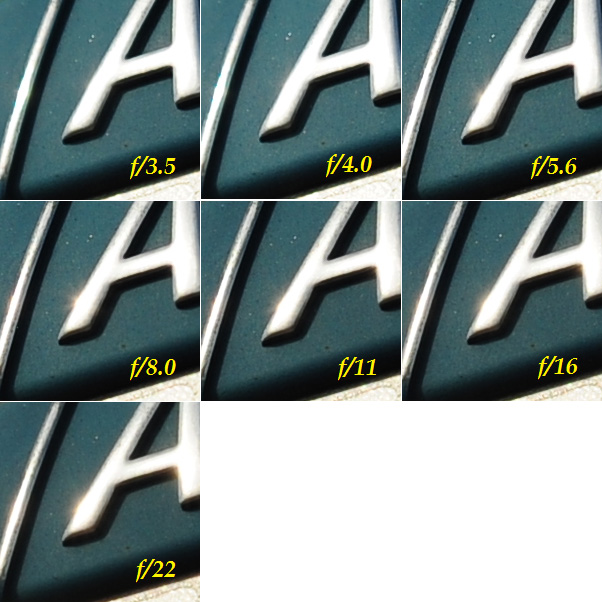
The use of an aspherical element is an important feature on any lens, and it’s pretty clear that Cosina made an excellent job to maintain the CA levels negligible. From all the shots I made with this lens there wasn’t a single day I noticed any fringing issues. The lens earns the maximum score here.
Coma
Coma is an important requirement in astrophotography and usually affects the corners of most lenses. This can be tested on the field, on a starry night, to check for weird distortions on the stars. Basically, lenses that are affected by coma produce stars that are no longer light points but comas instead (hence the name). One other way to test it is using a LED source of light at home in a dark room.
I put the light source at the center (first column), corner and extreme corner of the frame (second and third columns, respectively), at f/3.5 and f/5 (one stop down).

You can see that at f/3.5 the lens produces high amounts of coma at the extreme corners, although it gets better by stopping down. This is no big deal since the moderate maximum aperture is not very attractive for astrophotographers anyway, but if you’re taking this lens to the field be sure to use at least f/5 to avoid coma. Other than shooting stars and LEDs, there aren’t any more real world examples I can remember that may produce this coma aberration, so this shouldn’t scare you away.
Flare
I walked around my backyard doing many shots trying to get any flare vestiges. I started to shoot directly against the sun, then placed the sun at the corner and finally made some shots with the sun just outside the frame.
 |
| Shot directly against the sun. |
 |
| Shot with the sun placed at one corner of the frame. |
 |
| Shot with the sun just outside the frame. |
I took many more pictures and tried hard to produce flare but without success. That demonstrates that the Voigtländer has top quality coatings inside and the results put it along with the best lenses I used, with terrific flare resistance, and all of this without the need of the LH-20N hood available separately.
Bokeh
The Voigtländer has a moderate maximum aperture and a very wide angle, so the defocused quality of an image doesn’t get the same importance as with the fastest professional grade lenses. The lens has 9 aperture blades so we can expect pretty circular out of focus highlights.
For this test I took a defocused picture at f/3.5 of the city lights and got crops of the center, corner and extreme corners. The test was repeated for f/4 and f/5.6.

The bokeh from this lens is pretty circular at f/3.5 thanks to the 9 aperture blades, as expected, except at the extreme corners where weird distortions are visible. The bokeh is very nervous internally and the edges are a bit pronounced which of course isn’t attractive at all. Stopping down to f/5.6 starts producing polygonal highlights. Generally, with this lens it’s better to shoot close-up subjects with the maximum aperture, where the center sharpness is already very good, to get the best out of focus renderings.
Macro/Close-up
The Voigtländer was capable to focus as close as 20 centimeters from the sensor plane, that is 12 centimeters from the front element. I shot an 1 Euro coin and this is what to expect at the minimum focus distance:

Summary
| Build quality | 9 | The front cap gets off too easily, otherwise the lens is a jewel |
| Handling | 10 | Superb feel of a very solid lens, very easy to focus manually, with exposure being controlled automatically by the camera |
| Resolution | 6 | Very good center sharpness, poor corners and horrible extreme corners even at moderate apertures |
| Distortion | 7 | Some mustache distortion to be aware of, especially when placing horizontal lines at the top and bottom of the frame |
| Vignetting | 6 | May work on your favor or against you, depending on the subject, but it’s easy to correct |
| Chromatic aberrations | 10 | None, this is probably the best lens I have with such resistance |
| Coma | 7 | Wide open there’s coma at the extreme corners, but stopping down minimizes the problem |
| Flare | 10 | Top notch, no vestiges found whatever I have tried |
| Bokeh | 5 | Circular only at f/3.5 but very nervous with accentuated edges, and gets polygonal at smaller apertures |
| Overall | 75% | Excellent lens on DX, but look elsewhere if you need good edge to edge resolution and low vignetting on FX |
Samples
Here are some samples of pictures I made in my backyard. Settings: native JPEG, picture control set to Landscape mode, no post-processing applied except reducing to 600 pixel width.
 |
 |
 |
 |
 |
 |
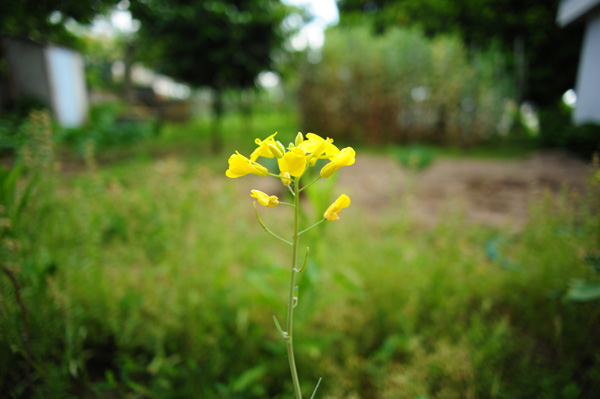 |
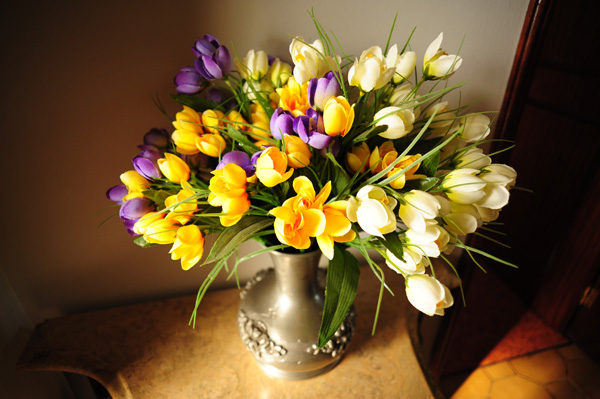 |